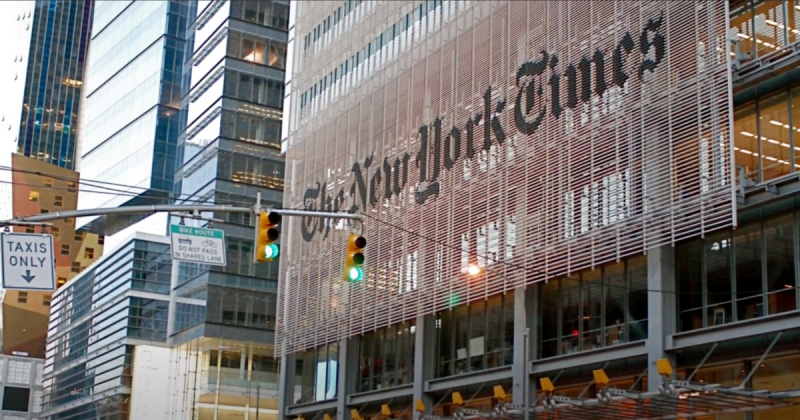The New York Times quietly walked back claims about a Gaza toddler shown in viral photos that sparked outrage last week.
The child was originally described as suffering from starvation. Now the outlet says he also had pre-existing health conditions.
The paper appended an editor’s note to the story on Tuesday, admitting it had left out major context about the child’s medical history.
“We have since learned new information, including from the hospital that treated him and his medical records,” a Times spokesperson said.
The boy, Mohammed Zakaria al-Mutawaq, is around 18 months old and was shown with a sunken face, ribs exposed, and a weak frame.
His photo was used to push the narrative that Israel’s war with Hamas has caused mass starvation in Gaza. The new correction admits the child also has other medical issues.
The Times now says he suffers from a muscle disorder and is receiving special nutrition and physical therapy, according to the New York Post.
His mother confirmed the diagnosis in a CNN interview. She also said her son is “happy” and able to “sit upright.”
The paper did not initially include those details and it didn’t note the obvious contrast seen in the original image. In the background of the viral photo, the boy’s older brother, Joud, is standing upright and appears far healthier.
The correction came just days after HonestReporting, a watchdog group focused on media bias against Israel, flagged the inconsistencies. They demonstrated the discrepancy between the toddler and his brother and pointed to other possible omissions in the reporting.
Pro-Israel journalist David Collier took it further. He cited a May 2025 medical report from Gaza that lists the boy as suffering from cerebral palsy, hypoxemia, and a genetic disorder.
The editor’s note posted by the Times did not go into those specifics. It vaguely stated that the boy had “pre-existing health problems” but avoided naming the conditions.
The viral image was picked up by multiple outlets and shared widely on social media.
Activists, influencers, and political figures used it as evidence that Israel was purposely starving children in Gaza. Critics now argue that the image was misleading and that the Times failed to provide basic journalistic context.
Kenneth Roth, a former Human Rights Watch executive, previously criticized the image as “heartbreaking evidence” of Israel’s “inhumane blockade.” That post remains online and uncorrected.
This isn’t the first time the Times has been accused of manipulating public opinion through incomplete reporting on Gaza. In multiple cases over the last year, the outlet has had to issue quiet corrections after pushing premature claims tied to civilian casualties.
Despite the editor’s note, the original article remains live with the same headline and featured image. The correction is located at the bottom, not at the top.

